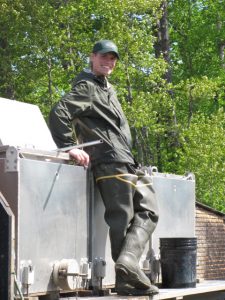Careers
In environmental and outdoor recreation fields, applicants with GIS skills are in increasing demand, making them more competitive in today’s tough job market.
What can you do with your degree?
- Community, regional and urban planning
- Land conservation
- GIS applications development
- Land use and land records mapping
- Geospatial analyst
- Cartographer
- Project manager
Who’s hiring?
- State and federal environmental agencies
- Tribal governments
- Private environmental advocacy organizations
- Resource extraction industries
- Nonprofit organizations
- Private environmental and civil engineering firms
Employment Outlook
The US Department of Labor classifies geographic information systems science and technology as a “bright outlook” field.
In 2018 there were 2,153 job openings and just 1,594 graduates in New England, and demand in the field is expected to increase by 9% from 2016 to 2026.
We’ll set you on a path to a career that works for you.
Whether you’re online or on campus, you’ll learn in small classes, typically of fewer than 20 students. That means you’ll get personal attention from your instructors and advisors from day one.
Our faculty members work hard to ensure that students are given access to internship and research opportunities that suit their strengths and interests. Because we spend so much time getting to know our students, our partner organizations trust that job references and letters of recommendation from UMaine Machias faculty are meaningful and sincere.
Alumni Spotlights
Environmental Geographic Information Science was formerly known as Environmental Studies at UMaine Machias. View some of our recent alumni spotlights below, and check back soon for more stories about graduates working in environmental GIS fields.






